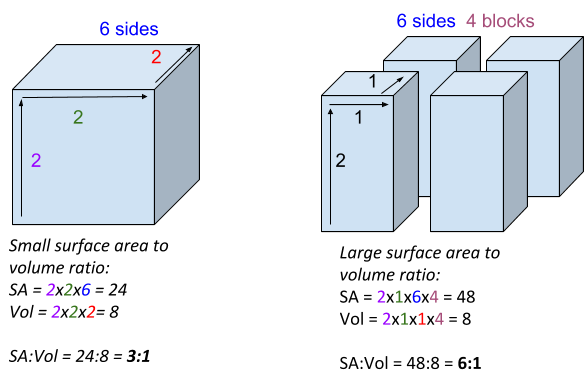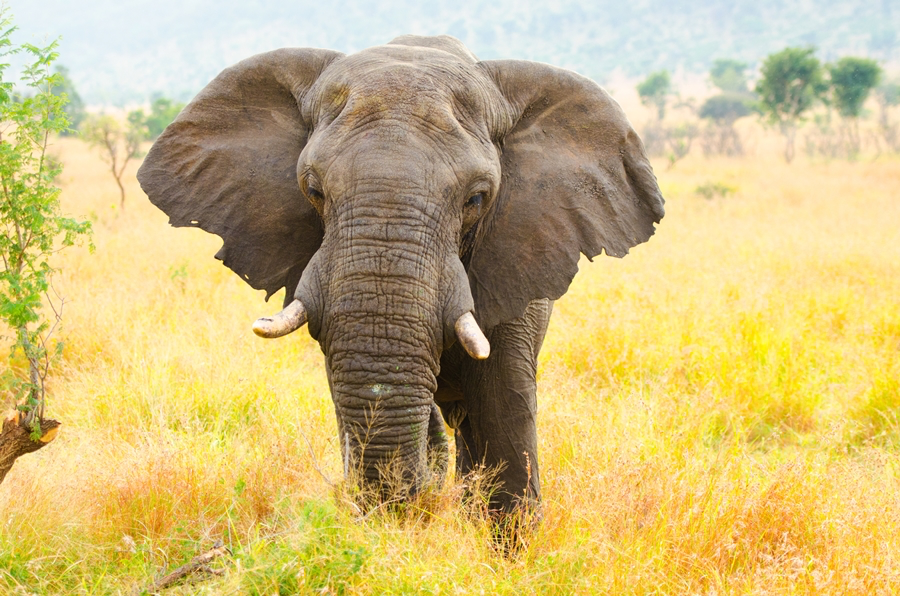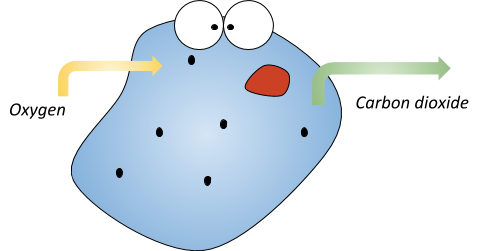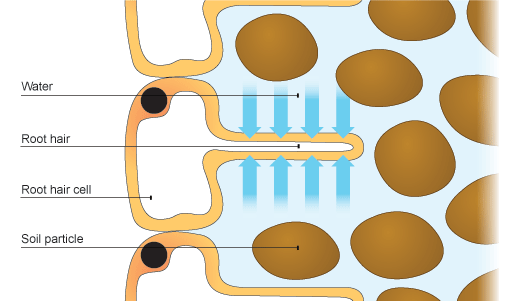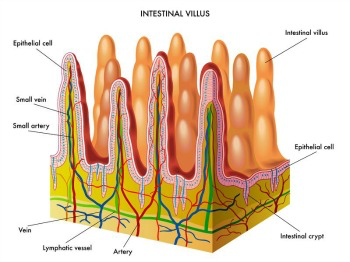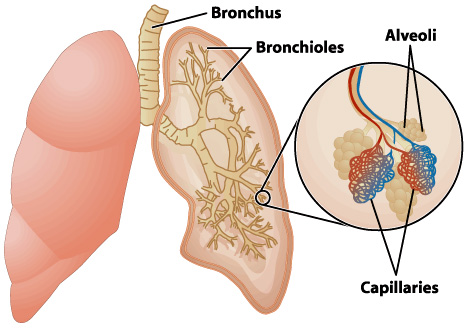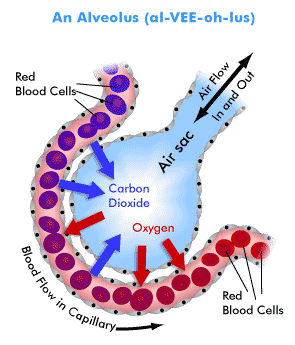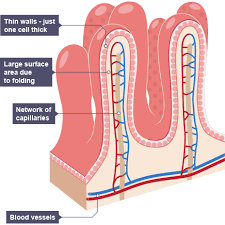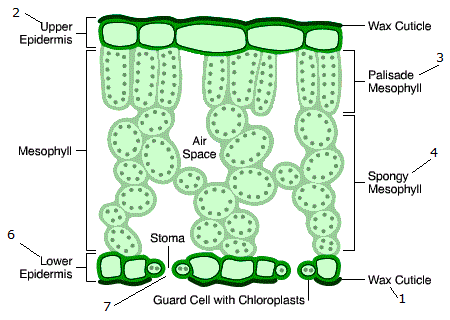Exchange Surfaces and Substances
Exchange Surfaces
All living organisms need a movement of substances into and out of their cells. This happens more easily if there is a large surface area to volume ratio.
Surface area to volume ratio
Surface area to volume ratio is just a comparison of how big the surface area is compared to the volume.
Here is how to calculate the surface area to volume ratio of something:
Surface area = length x width x number of sides
_Volume = length x width x height _
Then, you just have to put these two into a ratio form, like this:
Surface area : Volume.
To make these numbers more manageable, it is always best to make these numbers as small as possible, for example,
30 : 6
see if you can divide both numbers by something to make them as small as possible. A good tip is to start by trying to divide by the lowest number of the two (in this case, 6).
Worked example:
If there is more surface area, then there are more places for gas/liquid to be exchanged - which is a good thing!
Think about an elephants ears, they are large and flat (large surface area) so that more air can get to them and they can cool off faster!
Why are exchange surfaces needed?
Unicellular organisms:
Unicellular organisms are just made from one cell, this means that they automatically have a large surface area to volume ratio. Gases/liquids can diffuse directly into the cell across the cell membrane.
Note: Unicellular organisms don’t actually have eyes like this!
Multicellular organisms
Since multicellular organisms are usually a lot bigger, their surface area to volume ratio is quite small. This means that if gases/liquids just absorbed through the surface, there wouldn’t be enough to supply the whole volume with enough gas/liquid. For that reason, multicellular organisms need to do something else to get enough, this is where exchange surfaces come in!
Examples of exchange surfaces in multicellular organisms:
The roots of a plant are for absorbing water and minerals for the plants use. The roots are long and thin to increase the surface area. The roots also have tiny hairs which increase the surface area even further! Here’s a close up picture of a root hair cell. Notice that the surface area to volume ratio of each cell is very large because of the root hair!
The lining of the human small intestine is coated with long protrusions to increase the surface area of the small intestine. This is to increase the amount of area that substances can be absorb into the bloodstream.
Gas Exchange in Humans
The job of the lungs __is to transport __Oxygen into the body and Carbon dioxide out of the body. The lungs contain millions of air sacs (called alveoli) in order to increase the surface area of the lungs.
The alveoli are surrounded by a network of small blood vessels (called capillaries).
- When you breath in, there is a higher concentration of __oxygen __in the alveoli than in the blood vessels.
- Due to this concentration gradient, __oxygen __diffuses through the alveoli lining and into the capillaries.
- As this is happening, there is a higher concentration of Carbon dioxide in the capillaries than there is in the alveoli.
- Therefore the carbon dioxide diffuses into the alveoli from the capillaries.
Adaptations of alveoli
- Huge surface area - for a large exchange surface
- A moist lining - for dissolving gases
- A very good blood supply - since each capillary is surrounded by a network of blood vessels
- Thin walls (one cell thick) - so that gases can get through the walls of the alveoli easily
Digestion in Humans
Nutrients are absorbed into the bloodstream through the small intestine by diffusion and active transport (see ). To make this more efficient, the walls of the small intestine are covered in millions of villi (long protrusions). This MASSIVELY increases the surface area of the small intestine and makes food absorption much quicker.
Adaptations of villi:
Surface layer of the villi is one cell thick - to make it easier for the nutrients to get through to the bloodstream.
A very good blood supply - to make absorption quicker
Gas Exchange in Leaves
Firstly, leaves are long and flat to increase the surface area to volume ratio for sufficient gas exchange.
Plants need carbon dioxide for photosynthesis. They also need to get rid of oxygen as waste. The bottom of the leaf is the exchange surface of the plant. The inside of the leaf is a second exchange surface.
The bottom of the leaf is covered in little holes called stomata. This is where carbon dioxide diffuses into the leaf and oxygen and water diffuses out of the leaf.
The inside of the leaf has lots of air spaces, this makes it more likely that carbon dioxide wil l diffuse into the cells of the leaf.

